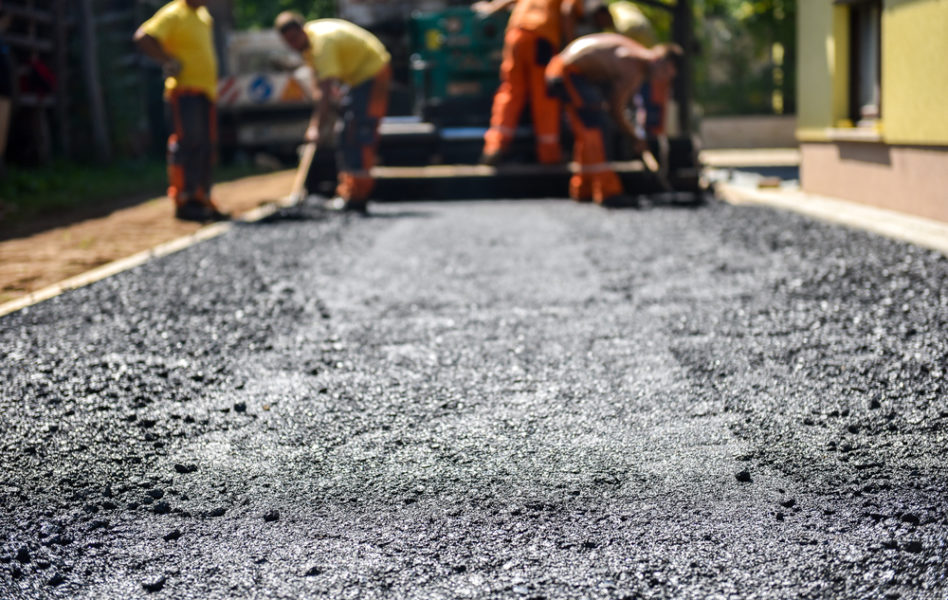Change Your Residential or commercial property's Landscape with Hot Mix Asphalt Paving Quality
Change Your Residential or commercial property's Landscape with Hot Mix Asphalt Paving Quality
Blog Article
Unlocking the Keys of Warm Mix Asphalt Technology
Exploring the midsts of warm mix asphalt technology uncovers a globe where thorough processes and precise formulas merge to shape our roadways and framework. The blend of binders, fillers, and accumulations isn't just a building and construction job however a critical orchestration of durability and efficiency. As we peer into the elaborate dancing of elements, a tapestry of resilience and sustainability unfolds. However what lies beneath this surface area of asphaltic proficiency, and what secrets wait to be revealed in the world of leading innovations?
Significance of Warm Mix Asphalt
Warm Mix Asphalt plays an important duty in modern infrastructure advancement because of its sturdiness and cost-effectiveness. As the most frequently made use of leading material for roadways, freeways, and parking area, Warm Mix Asphalt offers a series of benefits that add to its significance in construction tasks. One crucial advantage is its ability to stand up to rush hour tons and harsh weather, providing a long-lasting and reliable surface area for transportation networks. Additionally, Hot Mix Asphalt is cost-efficient in both first building and construction and long-lasting maintenance, making it a recommended selection for many infrastructure tasks.
The sturdiness of Warm Mix Asphalt stems from its make-up, which consists of aggregates, binder, and filler materials that are meticulously picked and mixed to satisfy specific performance needs. In general, the importance of Warm Mix Asphalt in facilities advancement can not be understated, as it proceeds to be a foundation of modern-day building and construction techniques.
Components of Asphalt Mixes
The make-up of asphalt mixes includes very carefully chosen accumulations, binder, and filler products that are crucial for accomplishing certain performance needs. Accumulations are the key component of asphalt mixes, supplying stamina and stability. These aggregates can be all-natural, such as gravel or smashed stone, or synthetic, like recycled products from old pavements. The binder, generally bitumen or asphalt concrete, holds the aggregates together and supplies flexibility and longevity to the mix. The selection of the binder is critical as it straight influences the mix's performance in various weather conditions. Fillers, such as moisturized lime or Portland concrete, are made use of to improve the mix's workability and aging resistance. Angled Parking.
The mix and proportion of these components play a considerable function in determining the quality and performance of the asphalt mix. Designers carefully make the mix to satisfy specific demands, considering variables like website traffic quantity, environment conditions, and pavement lifespan. Proper option and balancing of aggregates, binder, and fillers are important for creating durable, resilient asphalt sidewalks.
Combining and Manufacturing Methods

When the aggregates are selected, the binder, commonly asphalt cement, is included to bind the products with each other. The binder's high quality and amount dramatically impact the mix's versatility, resistance, and strength to environmental aspects. Furthermore, fillers like moisturized lime or Portland cement additional info might be incorporated to boost specific attributes of the asphalt mix, such as its workability or dampness resistance.
Throughout manufacturing, the aggregates and binder are warmed, typically between 250-325 ° F(121-163 ° C ), to assist in blending and make certain correct finishing of the accumulations. The mixing process must be complete to accomplish an uniform mixture that advertises the wanted performance attributes of the asphalt. Various methods, such as batch mixing or drum mixing, are employed to achieve regular and high-grade asphalt mixes for construction projects.
Factors Affecting Asphalt Efficiency
Aspects affecting asphalt efficiency incorporate a range of variables that influence the longevity, durability, and overall high quality of asphalt pavements. One vital factor is the quality of materials utilized in the asphalt mix.

Layout considerations, such as sidewalk thickness and drain, are important in guaranteeing the lasting efficiency of the asphalt pavement. By thoroughly taking into consideration these factors, designers and service providers can maximize asphalt performance and boost the service life of pavements.
Sustainable Practices in Asphalt Innovation

WMA visit permits for the production and placement of asphalt mixes at lower temperatures compared to conventional hot-mix asphalt, resulting in decreased power consumption and greenhouse gas discharges. The usage of permeable asphalt blends can assist minimize stormwater overflow problems by allowing water to penetrate with the sidewalk and right into the ground, promoting natural water filtration and charge processes.
Verdict
To conclude, hot mix asphalt modern technology plays a critical role in contemporary facilities growth due to its sturdiness and cost-effectiveness. By very carefully balancing elements, employing appropriate mixing techniques, and considering various elements, designers can create high-quality asphalt blends that hold up against heavy web traffic tons and harsh weather. Embracing sustainable practices, such as utilizing warm-mix innovations and recycled products, better improves the ecological friendliness of asphalt innovation.
Blending and production strategies in hot mix asphalt modern technology involve the specific mix and processing of aggregates, binder, and fillers to develop a durable and high-performance asphalt mix.Elements affecting asphalt efficiency incorporate an array of variables that influence the resilience, long life, and overall top quality of asphalt pavements. Lasting practices in asphalt modern technology incorporate various campaigns intended at reducing the ecological effect of asphalt manufacturing and paving procedures. By incorporating reclaimed asphalt pavement (RAP) and recycled asphalt tiles (RAS) right into new asphalt blends, the industry can substantially reduce the usage of raw products and power, while also reducing landfill waste.
WMA permits for the production and positioning of asphalt blends at lower temperatures contrasted to traditional hot-mix asphalt, resulting in lowered power intake and greenhouse gas emissions.
Report this page